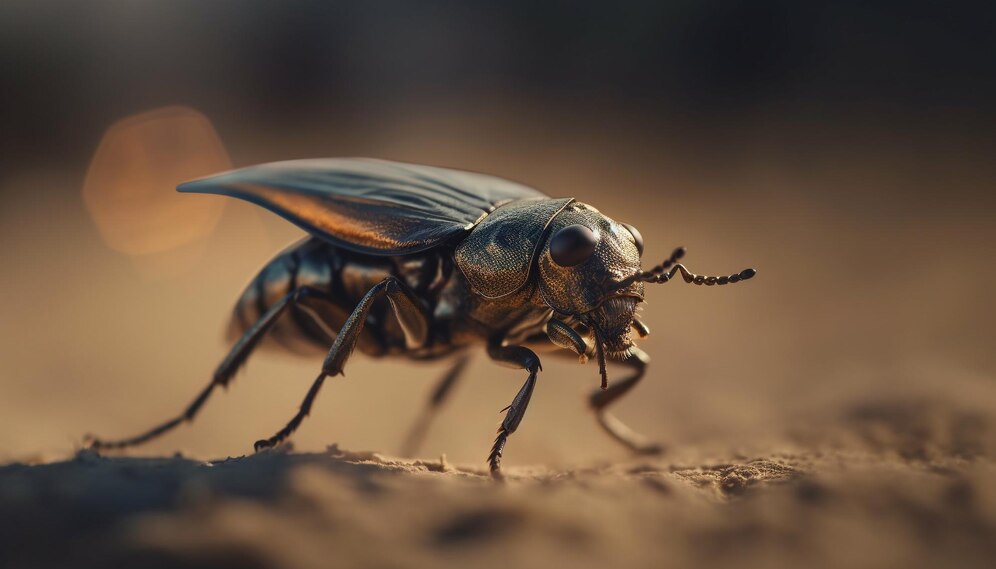How Far Can a Flea Jump? Have you ever wondered how far a tiny flea can jump? Well, prepare to be amazed by the incredible ability of these minuscule creatures! While they may be notorious for their pesky bites and irritating presence, fleas possess an astonishing jumping prowess that allows them to navigate through our homes with ease. In this article, we will delve into the physics behind flea jumping, explore the factors that affect their jumping distance, and discover just how high these little acrobats can soar. Get ready to dive into the fascinating world of flea agility! So, let’s find out: How far can a flea actually jump?
The Physics Behind Flea Jumping
Flea jumping is truly a remarkable feat, and understanding the physics behind it can shed light on just how these tiny creatures achieve such impressive jumps. The secret lies in their unique anatomy and powerful leg muscles.
Fleas have specially adapted legs that act as natural springs. These legs contain a protein called resilin, which stores and releases energy when compressed. When a flea prepares to jump, its back legs compress this spring-like mechanism by bending at the joints. Then, using an incredibly rapid release of stored energy, they extend their legs forcefully against the ground or surface they are on.
Fleas’ leg muscles play a significant role in propelling them into the air with incredible force. These muscles are much larger and stronger relative to their body size compared to other insects. This allows fleas to generate substantial power for their size and execute vertical jumps many times higher than themselves.
It’s fascinating to see how nature has equipped fleas with such extraordinary abilities through biomechanics! By utilizing specialized leg mechanisms and powerful muscles, these tiny creatures can launch themselves astonishing distances into the air with seemingly little effort. The next time you encounter a flea problem around your home or pets, remember just how far they can jump thanks to some incredible physics at work!
Factors Affecting Flea Jumping Distance
When it comes to flea jumping, there are several factors that can affect the distance they can cover. One of the key factors is the size and strength of their hind legs. Fleas have incredibly powerful leg muscles that allow them to generate a tremendous amount of force when they jump.
Another factor is the surface from which they are jumping. Fleas are able to jump further off smooth surfaces compared to rough or uneven ones. This is because a smooth surface provides a better grip for their tiny claws, allowing them to push off more effectively.
In addition, fleas also take into account environmental conditions such as temperature and humidity. Warmer temperatures tend to increase flea activity and improve their jumping ability. Humidity levels can also impact how far fleas are able to jump, as excessive moisture in the air can make it harder for them to gain traction and propel themselves forward.
These various factors work together to determine just how far a flea can jump at any given time. Understanding these influences helps us appreciate the remarkable agility and adaptability of these tiny creatures in navigating their environment with such precision and efficiency.
How High Can Fleas Jump?
Fleas are known for their incredible jumping abilities, but just how high can they actually jump? Well, prepare to be amazed! Despite their tiny size, fleas can jump up to an astonishing height of 150 times their own body length. That means if a flea is only 1 millimeter long, it has the potential to jump as high as 15 centimeters!
So what makes fleas such impressive jumpers? It all comes down to their unique anatomical features and powerful leg muscles. Fleas have specially adapted hind legs that are designed for catapulting them into the air with incredible force. These legs are not only long and slender but also equipped with spring-like structures called resilin pads. When a flea contracts its leg muscles and releases this stored energy, it propels itself into the air like a miniature rocket!
Do Fleas Have Control Over Their Landing?
Fleas may be tiny, but don’t underestimate their agility! When it comes to jumping, these little pests have some impressive skills. But what about landing? Do fleas have control over where they end up after a mighty leap?
Interestingly enough, fleas do not have complete control over their landing. While they can accurately calculate the distance and direction of their jump, once in mid-air, other factors come into play. The flea relies on air currents and small adjustments made by its body to navigate towards the target. However, external elements such as wind speed or air turbulence can affect its trajectory.
While fleas are exceptional jumpers capable of incredible feats of agility and precision in calculating distances, they don’t possess full control over where they land. Their landing is influenced by external factors that impact their trajectory mid-jump. Now let’s dive deeper into just how impressive flea jumping really is!
The Impressive Flea Jumping Ability
Fleas are truly remarkable creatures when it comes to their jumping ability. Despite their tiny size, these minuscule insects can launch themselves with astonishing force and precision.
The secret behind a flea’s impressive jumping ability lies in its powerful hind legs. These legs are specially designed with long and strong muscles that allow the flea to store energy like a coiled spring. When the flea is ready to jump, it releases this stored energy all at once, propelling itself into the air.
Once launched, fleas have been recorded reaching heights of up to 13 inches (33 centimeters) vertically and distances of up to 7 inches (18 centimeters) horizontally! This incredible feat enables them to easily move from one host animal to another or escape predators in no time at all. It’s truly an extraordinary display of agility and strength packed into such a small creature!
In comparison with other animals similar in size, fleas surpass most when it comes to their jumping ability. To put things into perspective, if humans had the same relative power as fleas do when they jump, we would be able to leap over tall buildings effortlessly! Such is the magnitude of this tiny insect’s impressive talent.
So next time you catch sight of a flea bouncing around your home or on your pet’s fur, take a moment to appreciate just how far they can jump; it truly is an awe-inspiring accomplishment for such a little creature!
Flea Jumping in Comparison to Other Animals
When it comes to jumping abilities, fleas are truly impressive. These tiny insects possess an incredible power that allows them to cover vast distances compared to their size. In fact, fleas are considered one of the best jumpers in the animal kingdom!
In terms of relative distance covered, a flea can jump up to 150 times its body length! To put things into perspective, if humans had this same ability, we would be able to leap over skyscrapers effortlessly! This remarkable feat is made possible by the specialized physical adaptations found in fleas’ hind legs and bodies.
Due to their small size and unique anatomy, fleas have evolved powerful leg muscles that enable them to generate immense force when leaping. Additionally, their bodies are designed for optimal weight distribution during jumps, maximizing their efficiency and allowing them to reach astonishing heights and lengths.
Comparatively speaking, fleas far outperform other animals when it comes to jumping prowess. For example, grasshoppers – usually considered excellent jumpers themselves – can only manage leaps about twenty times their body length. It’s safe to say that when it comes down to sheer jumping ability pound-for-pound or inch-for-inch (in this case), no creature surpasses the extraordinary skills of these minuscule acrobats.
Stay tuned for more fascinating facts about flea behavior and capabilities as we continue exploring these intriguing creatures!
Understanding the Flea Life Cycle
Fleas are small insects that can cause big problems, especially when it comes to infestations in our homes and on our pets. To effectively control and prevent flea infestations, it is important to understand their life cycle. How Far Can a Flea Jump?
The flea life cycle consists of four stages: egg, larva, pupa, and adult. Female fleas lay their eggs on their host (such as a dog or cat), but the eggs quickly fall off into the environment where they hatch into larvae. These tiny larvae feed on organic debris like skin cells and flea feces until they eventually spin cocoons and enter the pupal stage. After undergoing metamorphosis inside the cocoon, adult fleas emerge and seek out a new host for blood meals.
By understanding this life cycle, we can target each stage with appropriate treatment methods to break it and prevent re-infestation. Regular vacuuming of carpets and bedding can help remove eggs and larvae from your home environment while using insecticides or flea medications targeted at different life stages helps to eliminate existing fleas on your pets. Being aware of how fleas reproduce allows us to take proactive measures in controlling these pests effectively.
Preventing Flea Infestations
Fleas are not only irritating pests, but they can also cause a multitude of health problems for both humans and animals. Fortunately, there are measures you can take to prevent flea infestations in your home.
First and foremost, maintaining cleanliness is key. Regularly vacuuming carpets, rugs, upholstery, and pet bedding will help eliminate any eggs or larvae that may be present. Additionally, washing your pet’s bedding in hot water on a weekly basis can effectively kill fleas and their eggs.
Another important step is to treat your pets with preventive flea medications. These medications come in various forms such as topical treatments or oral tablets and work by killing fleas at different stages of their life cycle. It’s essential to consult with your veterinarian to determine the most suitable option for your furry friend.
By implementing these preventive measures consistently, you can greatly reduce the risk of flea infestations in your home and keep both yourself and your pets free from these pesky parasites!
Conclusion
How Far Can a Flea Jump? Fleas are truly remarkable creatures when it comes to their jumping ability. These tiny insects possess an extraordinary power that allows them to leap astounding distances relative to their size. Thanks to the unique physics behind flea jumping and some key factors like leg structure and muscle strength, fleas can catapult themselves up to 150 times their body length horizontally and up to 80 times vertically.
Understanding the flea life cycle is crucial in preventing infestations. By breaking this cycle through regular cleaning, vacuuming, and treating pets with veterinarian-approved flea control products, you can significantly reduce the risk of a flea invasion in your home.
So the next time you come across a pesky little flea bouncing about or find yourself wondering how far they can jump, remember that these small but mighty creatures have evolved impressive abilities that allow them not only to survive but also thrive in their environment. And while we may not want them as houseguests or on our beloved pets’ backs, there’s no denying the awe-inspiring nature of a flea’s agility and athleticism!
ALSO READ: The Symbolism of Ticks: More Than Just a Tiny Insect











